Lifestyle
Indigenous Catholics hope the next pope shares Francis’ approach to Native people
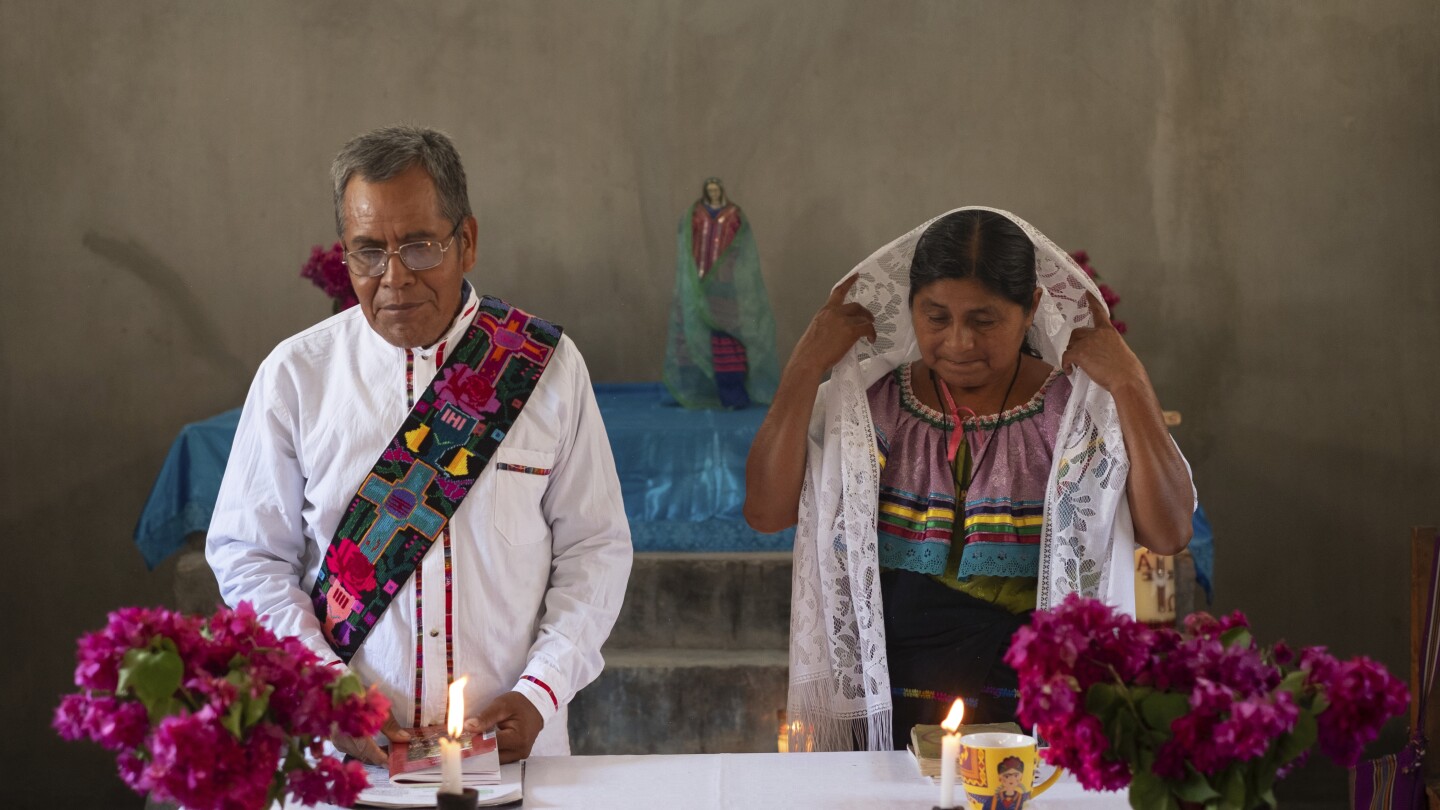
SIMOJOVEL, Mexico (AP) — At a recent service in the remote southern Mexican community of Simojovel, Catholic and Mayan symbolism mingled at the altar as the deacon — his wife beside him — read the gospel in his native Tsotsil and recalled Pope Francis’ teachings: work together for human rights, justice and Mother Earth.
The scene in the small church in Mexico’s poorest state, Chiapas, conveyed much of the message Francis delivered during his 2016 trip to the region and his other visits to far-flung locales, including the Amazon, Congo and the jungles of Papua New Guinea.
It also illustrated what the world’s Indigenous Catholics don’t want to lose with the death of the first pontiff from the Southern Hemisphere: their relatively newfound voice in an institution that once debated whether “Indians” had souls while backing European powers as they plundered the Americas and Africa.
“We ask God that the work (Francis) did for us not be in vain,” Deacon Juan Pérez Gómez told his small congregation. “We ask you to choose a new pope, a new servant, who hopefully Lord thinks the same way.”
Empowering Indigenous believers
Deacon Juan Pérez Gómez, left, takes part in a blessing ceremony after picking up Communion wafers that he will take to a priest to be consecrated before he can give them out in his next day service, in Nuevo Israelita, near Simojovel, Mexico, Saturday, April 26, 2025. (AP Photo/Isabel Mateos)
Francis was the first Latin American pope and the first from the order of the Jesuits, who are known for, among other things, their frontline work with society’s most marginalized groups. Although some feel Francis could have done more for their people during his 12 years as pontiff, Indigenous Catholics widely praise him for championing their causes, asking forgiveness for the church’s historical wrongs, and allowing them to incorporate aspects of their Native cultures into practicing their faith.
Among the places where his death has hit particularly hard are the lowlands of the Bolivian Amazon, which was home to Jesuit missions centuries ago that Francis praised for bringing Christianity and European-style education and economic organization to Indigenous people in a more humane way.
Marcial Fabricano, a 73-year-old leader of the Indigenous Mojeño people, remembers crying during Francis’ 2015 visit to Bolivia when the pope sought forgiveness for crimes the church committed against Indigenous people during the colonial-era conquest of the Americas. Before the visit, his and other Indigenous groups sent Francis a message asking him to push the authorities to respect them.
“I believe that Pope Francis read our message and it moved him,” he said. “We are the last bastion of the missions. … We can’t be ignored.”
That South American tour came shortly after the publication of one of Francis’ most important encyclicals in which he called for a revolution to fix a “structurally perverse” global economic system that allows the rich to exploit the poor and turns the Earth into “immense pile of filth.” He also encouraged the church to support movements defending the territory of marginalized people and financing their initiatives.
“For the first time, (a pope) felt like us, thought like us and was our great ally,” said Anitalia Pijachi Kuyuedo, a Colombian member of the Okaira-Muina Murui people who participated in the 2019 Amazon Synod in Rome, where Francis showed interest in everything related to the Amazon, including the roles of women.
Pijachi Kuyuendo, 45, said she hopes the next pope also works closely with Native people. “With his death, we face huge challenges.”
A wider path for the church
An Amazonian Indigenous child presents Pope Francis with a plant during the offertory of a Mass for the closing of the Amazon Synod in St. Peter’s Basilica at the Vatican, Oct. 27, 2019. (AP Photo/Alessandra Tarantino, File)
Pérez Gómez, 57, is able to help tend to his small Tsotsil Catholic community in Mexico because the church restarted a deaconship program under Francis.
Facing a priest shortage in the 1960s, the church pushed the idea of deacons — married men who can perform some priestly rituals, such as baptisms, but not others, such as conducting Mass and hearing confession.
Samuel Ruiz, who spent four decades as bishop of San Cristóbal de las Casas trying to improve the lives of Chiapas’ Indigenous people, saw deaconships as a way to promote the faith among them and form what he called a “Native church.” The deaconship initiative was such a hit in Ruiz’s diocese, though, that the Vatican halted it there in 2002, worried that Ruiz was using it as a step toward allowing married priests and female deacons. The halt was lifted in 2014.
Pope Francis watches traditional dancers perform at the Martyrs’ Stadium In Kinshasa, Democratic Republic of Congo, Feb. 2, 2023. (AP Photo/Gregorio Borgia, File)
Pérez Gómez, who waited 20 years before he was finally ordained a deacon in 2022, said he was inspired by Ruiz’s vision for a “Native church.” He said Francis reminded him of Ruiz, who died in 2011 and whom he credits with explaining the church’s true purpose to him as “liberator and evangelizer.”
“Francis also talked about liberation,” Pérez Gómez said, adding that he hopes the next pope shares that view.
New ways to celebrate Mass
Pope Francis holds hands with children wearing traditional costumes as he walks with Bolivian President Evo Morales upon his arrival at the airport in El Alto, Bolivia, July 8, 2015. The pouch Francis is wearing around his neck was given to him by Morales. It’s woven of alpaca with Indigenous trimmings and traditionally used by people in the Andes to hold coca leaves. (AP Photo/Gregorio Borgia, File)
It had been a half-century since the Vatican allowed Mass to be held in languages other than Latin when Francis visited Chiapas in 2016 and went a step further.
During a Mass that was the highlight of his visit, the Lord’s Prayer was sung in Tsotsil, readings were conducted in two other Mayan languages, Tseltal and Ch’ol, congregants danced while praying and Indigenous women stood at the altar.
Chiapas was a politically sensitive choice for the Pope’s visit, which wasn’t easily negotiated with the Vatican or Mexican government, according to Cardinal Felipe Arizmendi, who was then bishop of San Cristobal. In 1994, it saw an armed uprising by the Zapatistas, who demanded rights for Indigenous peoples.
Getting the Vatican to allow Mayan rituals in the Mass was also tricky, but Arizmendi recalled that there was a helpful precedent: Congo.
In 1988, the Vatican approved the first cultural innovation in a Mass, the so-called Zaire rite, which is a source of national pride and continental inclusion, said the Rev. Abbé Paul Agustin Madimba, a priest in Kinshasa. “It shows the value the church gives Africans.”
Francis cited the Zaire rite, which allowed some local music and dance to be incorporated into Mass, to argue for such accommodations with other Indigenous Catholics around the world.
The decision was made not only to expand Catholicism, which is in retreat in many places, “but also a theological act of deep listening and conversion, where the church recognizes that it is not the owner of cultural truth, but rather servant of the gospel for each people,” said Arturo Lomelí, a Mexican social anthropologist.
It was the Vatican’s way to see Indigenous rituals not as “threats, but rather as legitimate ways to express and live the faith,” he said.
‘No longer objects’
Pope Francis dons a headdress during a meeting with Indigenous communities, including First Nations, Metis and Inuit, at Our Lady of Seven Sorrows Catholic Church in Maskwacis, near Edmonton, Canada, July 25, 2022. (AP Photo/Gregorio Borgia, File)
On the Saturday after Francis’ death, Pérez Gómez stopped by a church in the town near his village to pick up the Communion wafers he would give out during his service the next day. Because he’s a deacon, he needs a priest to consecrate them for him ahead of time.
He and his wife, Crecencia López, don’t know who the next pope will be, but they hope he’s someone who shares Francis’ respect for Indigenous people. And they smile at the thought that perhaps one day, he could become a priest and she a deacon.
“We are no longer objects, but rather people” and that is thanks to God and his envoys, “jtatik Samuel (Ruiz)” and “jtatik Francis,” Pérez Gómez said, using a paternal term of great respect in Tseltal.
___
Associated Press writers Carlos Valdez in La Paz, Bolivia, Fabiano Maisonnave in Brasilia, Brazil, and Jen-Yves Kamale in Kinshasa, Congo contributed to this report.
Lifestyle
AP PHOTOS: See incredible Met Gala looks as stars pay tribute to Black fashion and designers

NEW YORK (AP) — Stars gathered Monday for a historic Met Gala that celebrated Black style and emerging designers.
The gathering in rainy Manhattan was the first Met Gala to focus exclusively on Black designers and the first in more than 20 years to have a menswear theme.
The gathering of stars from the worlds of fashion, entertainment, sports and business raised a record $31 million for the Met’s Costume Institute.
Rihanna attends The Metropolitan Museum of Art’s Costume Institute benefit gala celebrating the opening of the “Superfine: Tailoring Black Style” exhibition on Monday, May 5, 2025, in New York. (Photo by Evan Agostini/Invision/AP)
Demi Moore attends The Metropolitan Museum of Art’s Costume Institute benefit gala celebrating the opening of the “Superfine: Tailoring Black Style” exhibition on Monday, May 5, 2025, in New York. (Photo by Evan Agostini/Invision/AP)
Kim Kardashian attends The Metropolitan Museum of Art’s Costume Institute benefit gala celebrating the opening of the “Superfine: Tailoring Black Style” exhibition on Monday, May 5, 2025, in New York. (Photo by Evan Agostini/Invision/AP)
Coco Jones attends The Metropolitan Museum of Art’s Costume Institute benefit gala celebrating the opening of the “Superfine: Tailoring Black Style” exhibition on Monday, May 5, 2025, in New York. (Photo by Evan Agostini/Invision/AP)
Madonna attends The Metropolitan Museum of Art’s Costume Institute benefit gala celebrating the opening of the “Superfine: Tailoring Black Style” exhibition on Monday, May 5, 2025, in New York. (Photo by Evan Agostini/Invision/AP)
Lupita Nyong’o attends The Metropolitan Museum of Art’s Costume Institute benefit gala celebrating the opening of the “Superfine: Tailoring Black Style” exhibition on Monday, May 5, 2025, in New York. (Photo by Evan Agostini/Invision/AP)
Diana Ross attends The Metropolitan Museum of Art’s Costume Institute benefit gala celebrating the opening of the “Superfine: Tailoring Black Style” exhibition on Monday, May 5, 2025, in New York. (Photo by Evan Agostini/Invision/AP)
Serena Williams attends The Metropolitan Museum of Art’s Costume Institute benefit gala celebrating the opening of the “Superfine: Tailoring Black Style” exhibition on Monday, May 5, 2025, in New York. (Photo by Evan Agostini/Invision/AP)
Jennie attends The Metropolitan Museum of Art’s Costume Institute benefit gala celebrating the opening of the “Superfine: Tailoring Black Style” exhibition on Monday, May 5, 2025, in New York. (Photo by Evan Agostini/Invision/AP)
Roberto Bolle, from left, Jodie Turner-Smith and Daniel Lee attend The Metropolitan Museum of Art’s Costume Institute benefit gala celebrating the opening of the “Superfine: Tailoring Black Style” exhibition on Monday, May 5, 2025, in New York. (Photo by Evan Agostini/Invision/AP)
Jaden Smith attends The Metropolitan Museum of Art’s Costume Institute benefit gala celebrating the opening of the “Superfine: Tailoring Black Style” exhibition on Monday, May 5, 2025, in New York. (Photo by Evan Agostini/Invision/AP)
Shakira attends The Metropolitan Museum of Art’s Costume Institute benefit gala celebrating the opening of the “Superfine: Tailoring Black Style” exhibition on Monday, May 5, 2025, in New York. (Photo by Evan Agostini/Invision/AP)
Anok Yai attends The Metropolitan Museum of Art’s Costume Institute benefit gala celebrating the opening of the “Superfine: Tailoring Black Style” exhibition on Monday, May 5, 2025, in New York. (Photo by Evan Agostini/Invision/AP)
Doja Cat attends The Metropolitan Museum of Art’s Costume Institute benefit gala celebrating the opening of the “Superfine: Tailoring Black Style” exhibition on Monday, May 5, 2025, in New York. (Photo by Evan Agostini/Invision/AP)
Teyana Taylor attends The Metropolitan Museum of Art’s Costume Institute benefit gala celebrating the opening of the “Superfine: Tailoring Black Style” exhibition on Monday, May 5, 2025, in New York. (Photo by Evan Agostini/Invision/AP)
Dua Lipa attends The Metropolitan Museum of Art’s Costume Institute benefit gala celebrating the opening of the “Superfine: Tailoring Black Style” exhibition on Monday, May 5, 2025, in New York. (Photo by Evan Agostini/Invision/AP)
Ugbad Abdi attends The Metropolitan Museum of Art’s Costume Institute benefit gala celebrating the opening of the “Superfine: Tailoring Black Style” exhibition on Monday, May 5, 2025, in New York. (Photo by Evan Agostini/Invision/AP)
Simone Biles, left, and Jonathan Owens attend The Metropolitan Museum of Art’s Costume Institute benefit gala celebrating the opening of the “Superfine: Tailoring Black Style” exhibition on Monday, May 5, 2025, in New York. (Photo by Evan Agostini/Invision/AP)
Damson Idris attends The Metropolitan Museum of Art’s Costume Institute benefit gala celebrating the opening of the “Superfine: Tailoring Black Style” exhibition on Monday, May 5, 2025, in New York. (Photo by Evan Agostini/Invision/AP)
Lauryn Hill attends The Metropolitan Museum of Art’s Costume Institute benefit gala celebrating the opening of the “Superfine: Tailoring Black Style” exhibition on Monday, May 5, 2025, in New York. (Photo by Evan Agostini/Invision/AP)
Colman Domingo attends The Metropolitan Museum of Art’s Costume Institute benefit gala celebrating the opening of the “Superfine: Tailoring Black Style” exhibition on Monday, May 5, 2025, in New York. (Photo by Evan Agostini/Invision/AP)
–
This is a photo gallery curated by AP photo editors.
___
For more coverage of the 2025 Met Gala, visit: https://apnews.com/hub/met-gala
Lifestyle
Diplomats in Zimbabwe embrace local culture in a lively cooking contest
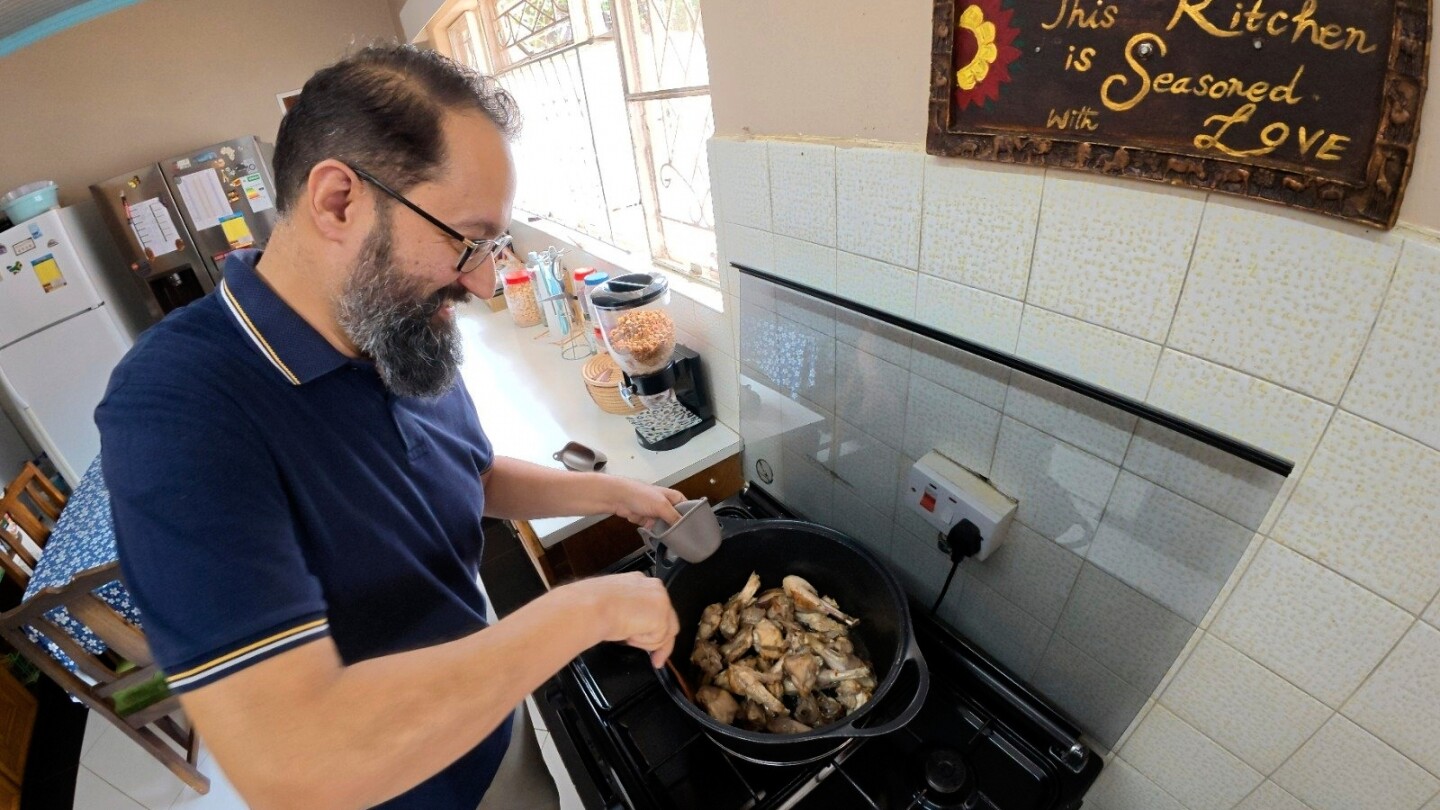
HARARE, Zimbabwe (AP) — In a world of trade wars, tariffs and tensions, foreign diplomats in Zimbabwe found a more lighthearted way to vie for supremacy: a cooking contest.
Ambassadors swapped briefing notes for recipes in the quest to win the second annual #ambassadorscookoff challenge in the southern African country last month. Their task was to produce the most delicious-looking version of a favorite local village dish of chicken with rice in a peanut butter sauce. The public voted online after the diplomats posted photos of their finished meals.
“The atmosphere in international relations these days is a little bit tense,” said France’s ambassador to Zimbabwe and cook-off competitor Paul-Bertrand Barets. “We are human beings. As diplomats, we want also to have some fun and to relax.”
Barets, in a blow for his food-famous nation, didn’t win.
The crown went instead to Dutch Ambassador Margret Verwijk. Other contestants included ambassadors from Canada, the U.K., Australia, Turkey and “flavor master” Murad Baseer, the ambassador of Pakistan, whose meal took third place.
The dish the ambassadors were judged on has its own story.
It’s made with what are known as “road runner” chickens — hardy free-range birds whose tough, flavorful meat is deemed by many to be tastier than that of commercially bred chickens. Known for scavenging and surviving in harsh rural conditions, the chickens are a staple of Zimbabwe village cuisine and often command high prices in urban restaurants.
The cookoff organized by Zimbabwe’s popular online foodie community TeamFulo encouraged the foreign envoys to do more than just cook a good meal.
They visited rural and township markets to source their ingredients, learned local cooking practices and immersed themselves in Zimbabwean food, humor and culture. From bargaining at the markets in the local Shona language to cooking on open fires with clay or iron pots, and even tossing in some Zimbabwean slang for flair, the contestants dived in and posted their progress on social media.
For Zimbabweans following online, it provided a rare chance to see foreign diplomats embrace local life with seemingly genuine interest and humility. Followers cheered the ambassadors on and assigned them Shona totems — symbols of kinship and respect.
Australian Ambassador Minoli Perera, whose dish took second place, knelt on a reed mat, blowing into a fire. She stirred a huge iron pot similar to those usually used for big rural feasts. Fans dubbed her “Chihera,” a revered totem associated with a lineage of assertive, independent women.
One gushed: “Ambassador, you are truly a daughter-in-law of Africa. I love it, I love it!”
British Ambassador Pete Vowles was a fan favorite. Video of him roasting and pounding peanuts and preparing other ingredients was accompanied by his best Shona commentary for each step. His experience riding home in a packed public minibus while cradling a live road runner chicken like a trophy was a hilarious highlight.
“Send us videos when you cook!” women shouted to him at the market. He even prompted nostalgic comments from online followers like “now you make me miss my rural home!”
Vowles won the Choice Award, given to the ambassador who best connected with the public online and in person.
“You reminded us of the richness in our culinary traditions. You truly brought the spirit of community to life,” said TeamFulo. Fulo is local slang for food.
Barets said his social media videos showing him chasing a chicken, shopping at a dusty market and demonstrating his kitchen skills gained attention and boosted interest in more formal posts on France’s diplomatic programs in Zimbabwe, which is enjoying improved relations with the United States and European Union following two decades of sanctions that are gradually being removed.
The cookoff provided a unique avenue to connect with ordinary Zimbabweans and “convince them we are human beings and not statutes with neck ties,” Barets said.
___
AP Africa news: https://apnews.com/hub/africa
Lifestyle
White House says Harvard will receive no new grants
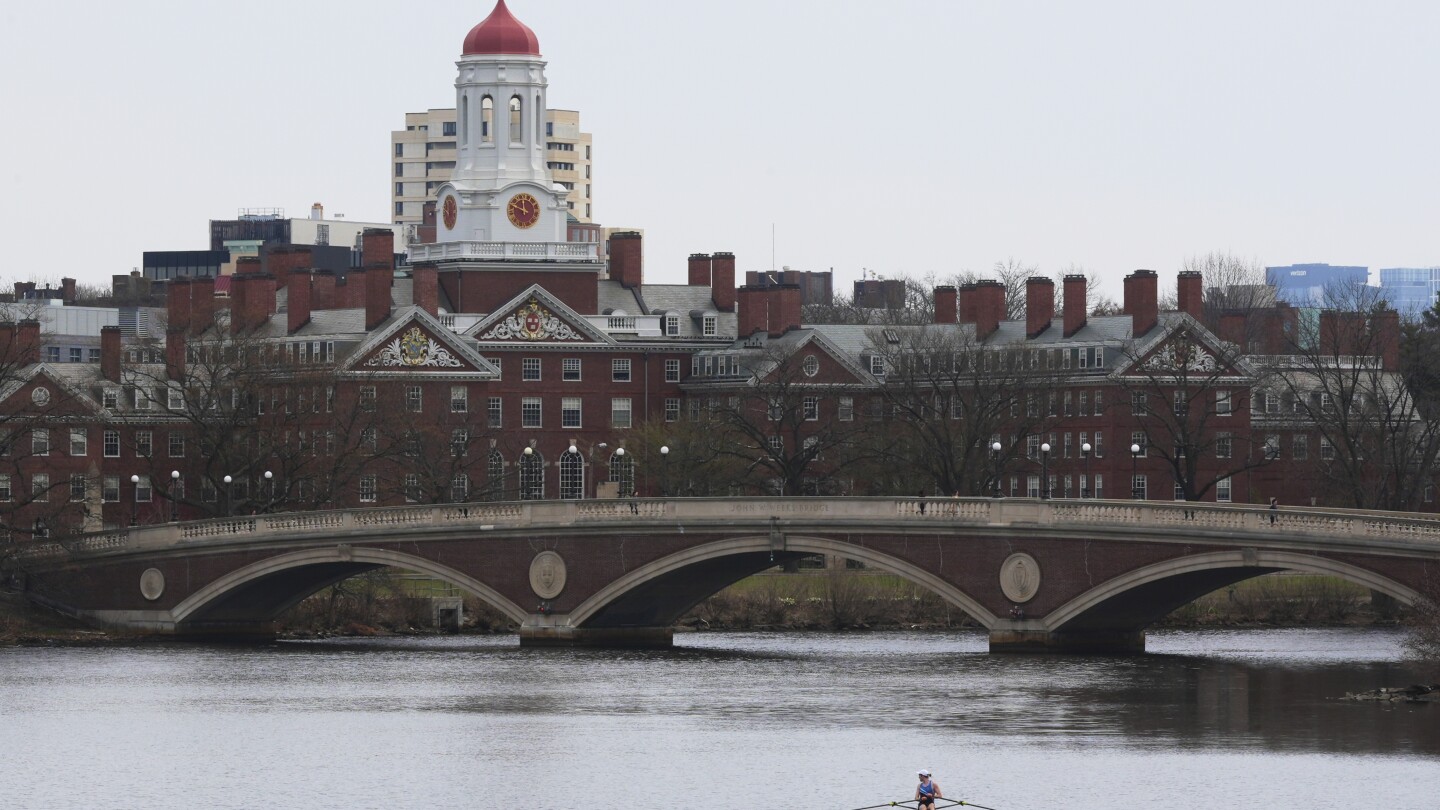
WASHINGTON (AP) — Harvard University will receive no new federal grants until it meets a series of demands from President Donald Trump’s administration, the Education Department announced Monday.
The action was laid out in a letter to Harvard’s president and amounts to a major escalation of Trump’s battle with the Ivy League school. The administration previously froze $2.2 billion in federal grants to Harvard, and Trump is pushing to strip the school of its tax-exempt status.
Harvard has pushed back on the administration’s demands, setting up a closely watched clash in Trump’s attempt to force change at universities that he says have become hotbeds of liberalism and antisemitism.
In a press call, an Education Department official said Harvard will receive no new federal grants until it “demonstrates responsible management of the university” and satisfies federal demands on a range of subjects. The ban applies to federal research grants and not to federal financial aid that helps students cover college tuition and fees.
The official spoke on condition of anonymity to preview the decision on a call with reporters.
The official accused Harvard of “serious failures.” The person said Harvard has allowed antisemitism and racial discrimination to perpetuate, it has abandoned rigorous academic standards, and it has failed to allow a range of views on its campus. To become eligible for new grants, Harvard would need to enter negotiations with the federal government and prove it has satisfied the administration’s requirements.
The Trump administration has demanded that Harvard make broad government and leadership changes, revise its admissions policy and audit its faculty and student body to ensure the campus is home to many points of view.
The demands are part of a pressure campaign targeting several other high-profile universities. The administration has cut off money to colleges including Columbia University, the University of Pennsylvania and Cornell University, seeking compliance with Trump’s agenda.
The White House says it’s targeting campus antisemitism after pro-Palestinian protests swept U.S. college campuses last year. It’s also focused on the participation of transgender athletes in women’s sports. The attacks on Harvard increasingly have called out the university’s diversity, equity and inclusion efforts, along with questions about freedom of speech and thought by conservatives on campus.
In a letter Monday to Harvard’s president, Education Secretary Linda McMahon accused the school of enrolling foreign students who showed contempt for the U.S.
“Harvard University has made a mockery of this country’s higher education system,” McMahon wrote.
Harvard’s president has previously said he will not bend to the government’s demands. The university sued last month to halt the government’s funding freeze.
In a conversation with alumni last week, Harvard President Alan Garber acknowledged there was a “kernel of truth” to criticism over antisemitism, freedom of speech and wide viewpoints at Harvard. But he said the conflict with the federal government has become a threat to the school’s autonomy.
“We were faced with a recent demand from the federal government that, in the guise of combating antisemitism, raised new issues of control that frankly we did not anticipate, getting to the heart of governance,” Garber said. “We felt that we had to take a stand.”
Harvard’s lawsuit called the funding freeze “arbitrary and capricious,” saying it violated its First Amendment rights and the statutory provisions of Title VI of the Civil Rights Act.
The Trump administration said previously that Harvard would need to meet a series of conditions to keep almost $9 billion in grants and contracts.
The school in Cambridge, Massachusetts, has an endowment of $53 billion, the largest in the country. Across the university, federal money accounted for 10.5% of revenue in 2023, not counting financial aid such as Pell grants and student loans.
Harvard isn’t alone in its reliance on federal money. Universities receive about 90% of all federal research spending, taking in $59.6 billion in 2023, according to the National Center for Science and Engineering Statistics.
That accounts for more than half the $109 billion spent on research at universities, with most of the rest coming from college endowments, state and local governments and nonprofits.
To make up for the loss in federal funding, McMahon on Monday suggested Harvard rely on “its colossal endowment” and raise money from wealthy alumni.
Harvard generally steers about 5% of its endowment value toward university operations every year, accounting for about a third of its total budget, according to university documents.
The university could draw more from its endowment, but colleges generally try to avoid spending more than 5% to protect investment gains. Like other schools, Harvard is limited in how it spends endowment money, much of which comes from donors who specify how they want it to be used.
___
AP writer Adam Geller contributed reporting from New York.
___
The Associated Press’ education coverage receives financial support from multiple private foundations. AP is solely responsible for all content. Find AP’s standards for working with philanthropies, a list of supporters and funded coverage areas at AP.org.
-

 Europe2 days ago
Europe2 days agoVenice is sinking. Now there’s a radical plan to lift the entire city above rising floodwaters
-

 Sports23 hours ago
Sports23 hours agoScottie Sheffler ties PGA Tour record to claim first victory of 2025 at the CJ Cup Byron Nelson
-

 Europe2 days ago
Europe2 days agoFather of crypto entrepreneur rescued from kidnappers after having finger severed
-

 Middle East2 days ago
Middle East2 days agoIsraeli soldiers, settlers harass Palestinian activist featured in BBC film | Israel-Palestine conflict News
-
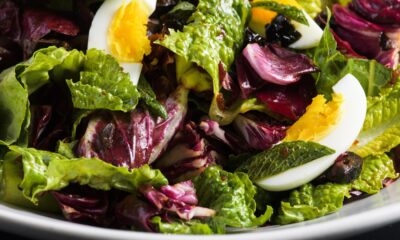
 Lifestyle1 day ago
Lifestyle1 day agoHow to make a colorful romaine and radicchio salad
-

 Africa19 hours ago
Africa19 hours agoDRC: M23 rebels seize strategic town despite peace talks
-

 Asia19 hours ago
Asia19 hours agoKashmir Fast Facts | CNN
-
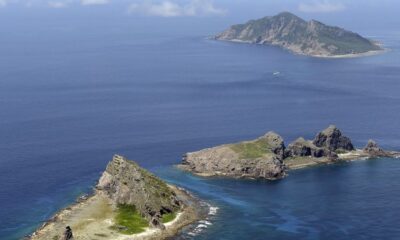
 Asia1 day ago
Asia1 day agoJapan and China accuse each other of violating airspace near disputed islands




